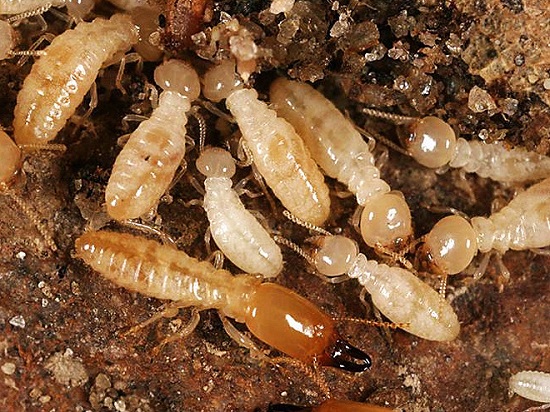

2017-08-03 Dott. Pietro Carta posted:
Among the main weeds that benefit from the hot and scorching climate are termites.
Not to be confused with winged ants, the termites shun light and free air, confining themselves in the stable environment of the termite nest or protected earth walkways.
Coming from the ground, they move around in search of food, feeding on the cellulosic materials they find in the ground or directly reach the interior of the buildings (wood in situ, cardboard, paper, etc.).

Starting from the ground, they penetrate the buildings, exploiting all the existing passages in the colonized environment: cracks in the foundations, interstices in walls or floors, electric, hydraulic and telephone ducting.
Mainly the wooden frames, supporting beams, parquet, mezzanines, wooden artefacts and paper material are mainly attached.
The attached wood is recognizable by its characteristic veneer appearance, with several superimposed layers interspersed with holes covered with the typical cement (called "replacement wood").
The colony moves in the tunnels dug in friable materials or in the characteristic earthy paths, built with a special "cement" to proceed on hard or exposed surfaces.
To effectively combat the problem of termites, Gallura Disinfestazioni uses the Sentritech System, an innovative multiphase system that exploits the biology of the pest: social behavior, characteristics of the pack, role of pheromones, constant research of food.
This system, with a very low environmental impact, is based on three consequential phases.
The first phase consists in identifying the first points of contact with the colony by installing priming stations.
The second phase consists in the addition of the active ingredient in the stations in which the presence of termites has been identified. This active principle acts by blocking the termite mite and preventing its development. The worker termites consume the bait and move the product to the remaining individuals in the colony through the exchange of food (trofallassi). This is how a chain poisoning occurs.
The third and last phase consists of a post-treatment monitoring in order to avoid re-infestation.
How much it cost?